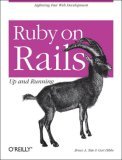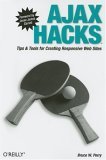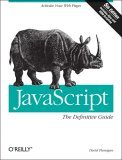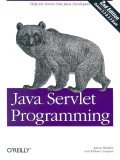



Homepage: http://jmvidal.cse.sc.eduClass Meeting Time: MW 2:30-3:45
Office: SWGN 3A51
Office Hours: Check my Calendar, or email me for an appointment.
Prerequisites: CSCE 350, CSCE 240. Also, CSCE 416 is helpful, but not necessary. More generally, this class involves a lot of programming. I assume that you have extensive experience with object-oriented programming (Java) and scripting languages. You need to have taken Data Structures and Algorithms (CSCE 350), as well as other programming classes. You also must be willing to dedicate a lot of time to this class as programming is always an extremely time-consuming activity.
Overview: This class deals with the development of web
applications using the latest technologies and emphasizing a deep
understanding of the basic protocols and technologies used (as
opposed to just learning to use a third-party tool). We also focus
on applications that facilitate electronic commerce such as
electronic payment mechanisms, automated workflow systems, and
sophisticated online auctions. The basic schedule is as
follows:
| Week | Topic |
|---|---|
| 1 | Internet Basics |
| 2 | HTTP, Cookies, XHTML, CSS |
| 3, 4 | Java Servlets, Tomcat, PHP |
| 5, 6 | JavaScript, and the DOM, and XML |
| 8 | Ajax, Web 2.0, script.aculo.us |
| 9 | SVG, Canvas, with JavaScript. Semantic Web: SPARQL. SOAP. |
| 10, 11 | CMS and Web development platforms: Ruby on Rails, Google Web Toolkit |
| 12 | The Web as a programming platform: del.icio.us, flickr, facebook, OpenSocial, Google gears. |
Grading: Grading is based on several small programming
projects that will get the students acquainted with the
technologies in question and a large final project, with an
associated presentation, where the students demonstrate mastery of
several of the technologies presented in class. The projects are
to be done either individually or in pairs, where paired
students. Graduate students will also be required give a short
presentation on a new technology (or case study) related to web
applications and ecommerce which was not discussed in class. That
is, graduate students are required to perform some extra
research. The final grade is calculated as follows:
| Item | Undergraduates | Graduates |
|---|---|---|
| Problem Sets (3) | 20% each | 15% each |
| Research Presentation | 0% | 15% |
| Final Project | 40% | 40% |
Deliverables: Students who pass this class are be able to design and implemented complex software solutions using state of the art software engineering techniques. They are able to understand, design, and implement sophisticated web applications using technologies such as XHTML, CSS, XML, SVG, Java Servlets, and JavaScript. They have a deep understanding of the techniques behind web programming. They also understand the basic issues and technologies available for implementing ecommerce web applications. The specific outcomes we expect are:
